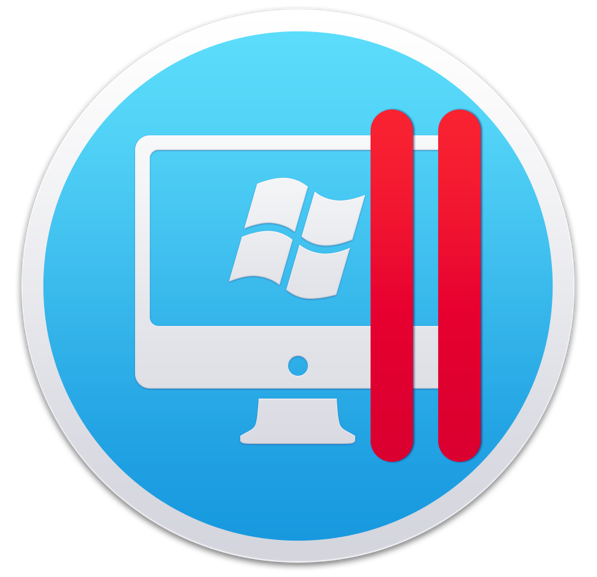

- PARALLELS DESKTOP 15 BALCK SCREEN WINDOWS 10 HOW TO
- PARALLELS DESKTOP 15 BALCK SCREEN WINDOWS 10 INSTALL
- PARALLELS DESKTOP 15 BALCK SCREEN WINDOWS 10 UPDATE
- PARALLELS DESKTOP 15 BALCK SCREEN WINDOWS 10 FULL
- PARALLELS DESKTOP 15 BALCK SCREEN WINDOWS 10 FOR WINDOWS 10
Login to Ubuntu and run the Software Updater. Under Hardware -> Video disable 3D Acceleration.

In Parallels Desktop Control Center do a Configure. Using Parallels Desktop's menu do a Shutdown. Log in and you should see your black screen!
PARALLELS DESKTOP 15 BALCK SCREEN WINDOWS 10 UPDATE
Login and run in a terminal sudo apt-get update
PARALLELS DESKTOP 15 BALCK SCREEN WINDOWS 10 INSTALL
Once you are logged into Ubuntu do a manual install of Parallel Tools, reboot.

Using Parallels Desktop 10 and installed Ubuntu 14.04.1ĭo a fresh install of Ubuntu 14.04.1 via it's ISO image with Parallels Desktop 10. Restart, and you're back in business (No black screen and everything properly updated). You will now get a completely black screen.Īgain, in Parallels config for the VM, go to Hardware > Video and reenable 3D acceleration. In Parallels 9 config for the VM, go to Hardware > Video, and disable 3D acceleration. It was simple, but I don't know why it worked. Here's what worked for me after I updated 13.10 and received a black screen, although the toolbar on the left was showing. As stated above, always make a Parallels snapshot before running Ubuntu update, just to be safe.
PARALLELS DESKTOP 15 BALCK SCREEN WINDOWS 10 HOW TO
Just before I installed the Ubuntu updates, Parallels Tools had reinstalled itself, due to a new version of the Tools since I last used the VM, but it seems that certain kinds of Linux updates break the video driver. Here is a detailed outline of Parallels Desktop 15 system requirements for hardware, supported host and guest operating systemsas well as how to transfer your PC to a virtual machine provided below.
PARALLELS DESKTOP 15 BALCK SCREEN WINDOWS 10 FULL
If I click to start any apps, like Firefox, the icon in the bottom of the Parallels screen indicate that the re is disk activity as the app starts, but the screen remains black. Sticky Multi-monitor setup remembers settings and puts Windows virtual machines back into Full Screen mode on the remote monitor Sync iCloud, SkyDrive, Dropbox. On reboot, I could see the login screen, then after logging in, I could see the Unity "Launcher" or whatever the call the row of icons on the left, but the rest of the screen was black. This just happened to me, with Mavericks, Parallels 2, Ubuntu 13.10 and updates installed on.
PARALLELS DESKTOP 15 BALCK SCREEN WINDOWS 10 FOR WINDOWS 10
The icons for Windows 10 Modern applications used by Parallels Shared Applications were improved and are now easier to recognize. Reinstalling Parallels Tools blindly does the trick. Login, Shutdown, Black (on slow virtual machines) and some other Windows screens are now hidden behind the Parallels Desktop dialog. One of these PowerToys features is FancyZones, which lets you split windows in different ways - taking up thirds of your screen, horizontal splitting and so on.I have a solution. If you want to dig even deeper into Windows’ snapping features, you can do so with Microsoft PowerToys, which unlocks a load of extra customisability aimed at Windows 10 power users. So Win + right arrow will snap to the right edge of your first screen, then just do the same again to move it over to the left edge of the second screen, and so on. When you see the snap outline appear for that window, you can let go of the mouse button and it will snap to the edge or corner of the screen.Īlternatively, you can use the keyboard shortcuts under the previous heading to snap windows freely between your two screens. The solution is to drag the window /slowly/ to the edge of the first screen. Of course, that’s fine if you want to snap your windows on the second screen anyway, but what about snapping to the first screen with a dual-monitor setup? If you’re using two monitors, then you’ll find that when you drag a window over to the edge of the screen it will be pulled over to your second screen instead of snapping to the edge of the first one.



 0 kommentar(er)
0 kommentar(er)
